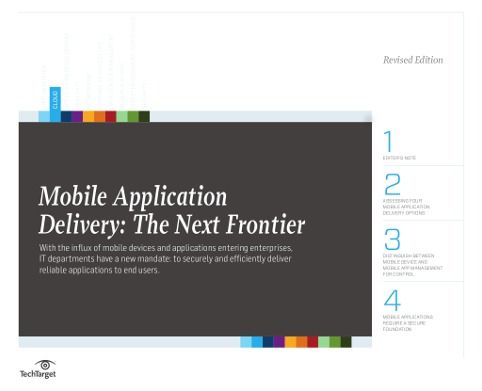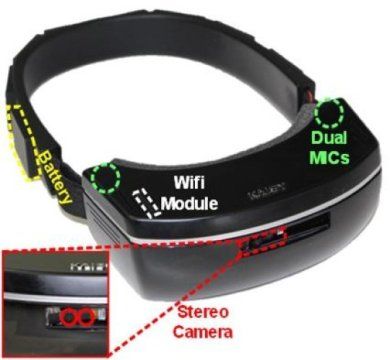Archive for the ‘wearables’ category: Page 67
Mar 19, 2016
A Student Claims to Have Designed Working Artificial Gills
Posted by Karen Hurst in categories: innovation, wearables
In time for vacation/ summer holiday season.
A mysterious site showcases a detailed blueprint of a wearable device that lets users breathe underwater like fish.
Mar 16, 2016
Virtual Reality And Payment Wearables Tee Off At The Arnold Palmer Invitational Presented By MasterCard
Posted by Karen Hurst in categories: augmented reality, virtual reality, wearables
MasterCard is bringing the future of commerce to life with virtual and augmented reality commerce experiences and payment enabled wearables at the.
Arnold Palmer Invitational Presented by MasterCard (API) in Orlando, FL. Soon, golf fans may be able to shop for Graeme McDowell’s equipment and G-Mac apparel, while teeing off with him on a virtual fairway. Or, while out on the course, golfers might simply tap their golf glove at the point-of-sale to buy refreshments from the beverage cart—no wallet required.
Mar 9, 2016
‘Artificial pancreas’ is one of new tech devices aimed at diabetes
Posted by Karen Hurst in categories: biotech/medical, health, mobile phones, robotics/AI, wearables
Wearables and other connected devices have been available to help treat chronic conditions like asthma and heart disease for a while now. But thus far, the nation’s 30 million diabetics haven’t seen much to help them improve their health or reduce the daily grind of finger pricks and needle pokes.
The $2.5 billion connected-care industry may be off to a late start in diabetes, but it’s making up for lost time. A new breed of connected glucometers, insulin pumps and smartphone apps is hitting the market. They promise to make it easier for diabetics to manage the slow-progressing disease and keep them motivated with feedback and support. In as little as two years, the industry plans to take charge of the entire uncomfortable, time-consuming routine of checking and regulating blood-sugar levels with something called an artificial pancreas. Such systems mimic the functions of a healthy pancreas by blending continuous glucose monitoring, remote-controlled insulin pumps and artificial intelligence to maintain healthy blood-sugar levels automatically.
For Jeroen Tas, CEO of Philips’ Connected Care and Health Informatics unit, diabetes management is also personal: his daughter Kim is diabetic.
Continue reading “‘Artificial pancreas’ is one of new tech devices aimed at diabetes” »
Mar 8, 2016
When Will Virtual Embodiment Take Shape in Mainstream Society?
Posted by Dan Faggella in categories: neuroscience, robotics/AI, thought controlled, virtual reality, wearables
Virtual and augmented reality is taking giant leaps every day, both in the mainstream and in research labs. In a recent TechEmergence interview, Biomedical Engineer and Founder of g.tec Medical Engineering Christopher Guger said the next big steps will be in brain-computer interfaces (BCIs) and embodiment.

Image credit: HCI International
If you’re unfamiliar with the term, embodiment is the moment when a person truly “feels” at one with a device controlled by their thoughts, while sensing that device as a part of, or an extension, of themselves. While researchers are taking big strides toward that concept, Guger believes those are only baby steps toward what is to come.
While augmented or virtual reality can take us away for a brief period, Guger said true embodiment will require far more BCI development. There has been a lot of work recently in robotic embodiment using BCI.
Continue reading “When Will Virtual Embodiment Take Shape in Mainstream Society?” »
Mar 7, 2016
Virtual reality on the cusp of enterprise adoption
Posted by Karen Hurst in categories: augmented reality, internet, virtual reality, wearables
Many opportunities in the VR/ AR space for enterprise Apps, Platforms, and services. Over the years we all have seen many opportunities missed where companies did not do the proper value map assessment and apply their finding to their own prod roadmaps. I personally have created my own value map of VR & AR opportunities across various industries and their biz caps.; and hope that others have done the same around this technology.
But augmented reality might be the best stepping stone, Hardware, Gadgets, Developer, Internet of Things, Wearables, Google, HTC, Fujitsu, Epson.
Feb 29, 2016
How to make your own Bluetooth-controlled underlit miniskirt
Posted by Shailesh Prasad in categories: internet, transportation, wearables
The Internet full of incredible DIY projects that make you wish you had the years of experience required to build your own Batmobile, flaming Mad Max guitar, or hoverboard. Thankfully with the underlit miniskirt, we’ve come across a DIY item that looks awesome and is still easy to make.
This wearable was inspired by the Hikaru skirt, a programmable LED miniskirt that took certain corners of the Japanese Internet by storm earlier this year.
Feb 29, 2016
AI learns to predict human reactions
Posted by Dan Kummer in categories: information science, mobile phones, robotics/AI, wearables
A team of Stanford researchers have developed a novel means of teaching artificial intelligence systems how to predict a human’s response to their actions. They’ve given their knowledge base, dubbed Augur, access to online writing community Wattpad and its archive of more than 600,000 stories. This information will enable support vector machines (basically, learning algorithms) to better predict what people do in the face of various stimuli.
“Over many millions of words, these mundane patterns [of people’s reactions] are far more common than their dramatic counterparts,” the team wrote in their study. “Characters in modern fiction turn on the lights after entering rooms; they react to compliments by blushing; they do not answer their phones when they are in meetings.”
In its initial field tests, using an Augur-powered wearable camera, the system correctly identified objects and people 91 percent of the time. It correctly predicted their next move 71 percent of the time.
Feb 27, 2016
Researchers upgraded their smart glasses with a low-power multicore processor to employ stereo vision and deep-learning algorithms, making the user interface and experience more intuitive and convenient
Posted by Karen Hurst in categories: augmented reality, energy, engineering, information science, internet, mobile phones, wearables
K-Glass, smart glasses reinforced with augmented reality (AR) that were first developed by the Korea Advanced Institute of Science and Technology (KAIST) in 2014, with the second version released in 2015, is back with an even stronger model. The latest version, which KAIST researchers are calling K-Glass 3, allows users to text a message or type in key words for Internet surfing by offering a virtual keyboard for text and even one for a piano.
Currently, most wearable head-mounted displays (HMDs) suffer from a lack of rich user interfaces, short battery lives, and heavy weight. Some HMDs, such as Google Glass, use a touch panel and voice commands as an interface, but they are considered merely an extension of smartphones and are not optimized for wearable smart glasses. Recently, gaze recognition was proposed for HMDs including K-Glass 2, but gaze is insufficient to realize a natural user interface (UI) and experience (UX), such as user’s gesture recognition, due to its limited interactivity and lengthy gaze-calibration time, which can be up to several minutes.
As a solution, Professor Hoi-Jun Yoo and his team from the Electrical Engineering Department recently developed K-Glass 3 with a low-power natural UI and UX processor to enable convenient typing and screen pointing on HMDs with just bare hands. This processor is composed of a pre-processing core to implement stereo vision, seven deep-learning cores to accelerate real-time scene recognition within 33 milliseconds, and one rendering engine for the display.
Feb 27, 2016
New Virtual Reality Suit Lets You Reach Out & Touch ‘Environment’
Posted by Karen Hurst in categories: materials, mobile phones, virtual reality, wearables
And, this will only be the beginning because with the lightering weight materials that have been develop we will see some amazing VR suits coming.
Virtual reality could one day incorporate all the senses, creating a rich and immersive experience, but existing virtual reality headsets only simulate things you can see and hear. But now, a group of engineers wants to help people “touch” virtual environments in a more natural way, and they built a wearable suit to do just that.
Designed by Lucian Copeland, Morgan Sinko and Jordan Brooks while they were students at the University of Rochester, in New York, the suit looks something like a bulletproof vest or light armor. Each section of the suit has a small motor in it, not unlike the one that makes a mobile phone vibrate to signal incoming messages. In addition, there are small accelerometers embedded in the suit’s arms.
Continue reading “New Virtual Reality Suit Lets You Reach Out & Touch ‘Environment’” »















